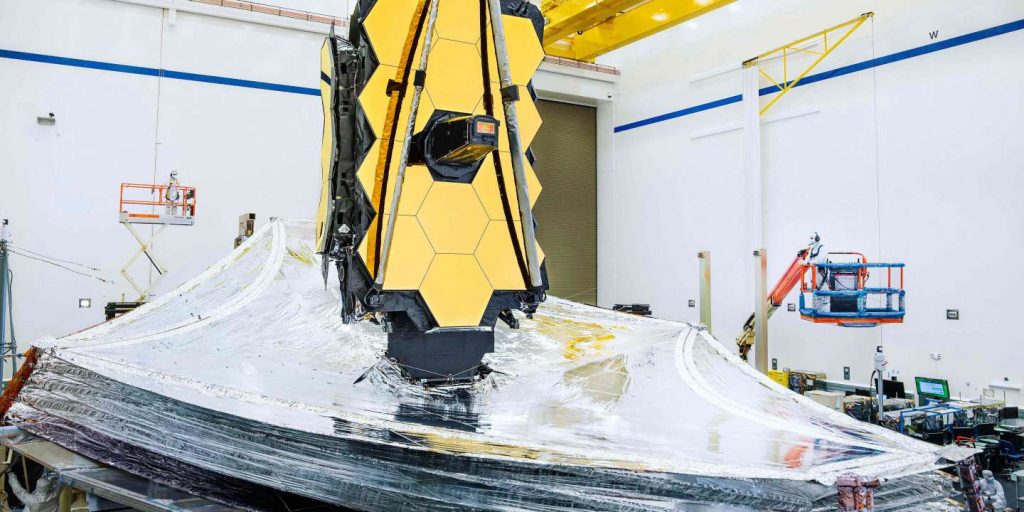
The James Webb Telescope’s heat shield has been deployed, a critical step in the mission

On Tuesday, January 4, the James Webb Space Telescope took a huge step toward the success of its mission, with the full deployment of the heat shield. An essential element for making future observations of the universe.
This sunscreen consists of five layers, each the size of a tennis court, intended to protect scientific instruments from our star’s heat. They have been carefully revealed and extended one by one since Monday.
The telescope would have to be too big to fit any rocket, and the telescope was folded on itself like origami and required to be deployed into space. A risky procedure, which makes this deployment one of the most difficult stages. Astronomers around the world anticipate this the most powerful space telescope ever built. In particular, it should make it possible to observe the first galaxies, which formed only a few hundred million years after the Big Bang.
The observatory took off a little over a week ago from French Guiana and is now more than 900,000 kilometers from Earth. It’s still on its way to reaching its final orbit, 1.5 million kilometers from us – four times the distance between Earth and the Moon. In this place, in the event of a problem, no repair task is conceivable.
Therefore, it should be deployed, with experience from Baltimore, on the East Coast of the United States without any errors. More than a hundred engineers are currently working there around the clock to make sure everything goes as planned.
On Tuesday morning, NASA broadcast the event live on the Internet. Since no aircraft on board could take pictures of the observatory itself, the only pictures available were from the operations control room, where the deployment teams rejoiced after announcing the spread of Layer 5 tension.
“Feeling relieved”
The lens hood measures approximately 20 x 14 meters and is designed in the shape of a diamond. Its layers, thin as hair, were formerly folded like an accordion, and now some are spaced a few tens of a few tens of centimeters.
It is made of kapton, a material chosen for its resistance to temperature extremes: the closest side of the sun will be able to reach 125 ° C, and the farthest – 235 ° C. Their deployment included hundreds of pulleys and meters of cable to guide them, as well as motors to tug each sail, from every diamond corner. This procedure was repeated several times on Earth, but those responsible for the mission were especially afraid.
“When he asks me what keeps me up at night, it’s spreading sunblock”Bill Ochs, James Webb’s project manager, said Monday, just before operations began. “We will all sigh of relief when we reach the fifth layer.”
Go back to the origins of the universe
On Monday, the first three layers were successfully opened and extended. Tuesday morning, the teams did the same with the latter two. Previously, the two “oars” containing the sun shield were launched.
This heat shield is critical, because James Webb’s scientific instruments can only operate at very low temperatures and in the dark. The great novelty of this telescope is that it will actually only operate in the near and mid-infrared, wavelengths not visible to the naked eye.
However, to be able to detect faint flashes coming from the frontiers of the universe, you must in no way be affected by the radiation of the Sun, or those returned by the Earth and the Moon.
The next step is to spread the mirrors: first, the secondary mirror is smaller and placed at the end of a tripod. Then the iconic main mirror, covered in gold and about 6.6 meters in diameter, the sides of which will open one by one.
When it is in its final configuration, the telescope will reach its destination, called the Lagrange point 2. The instruments will still have to be cooled and calibrated, and the mirrors are finely tuned. Six months after liftoff, the telescope will finally be ready to return to the origins of the universe and search for habitable environments outside our solar system.

“Incurable web evangelist. Hipster-friendly gamer. Award-winning entrepreneur. Falls down a lot.”
